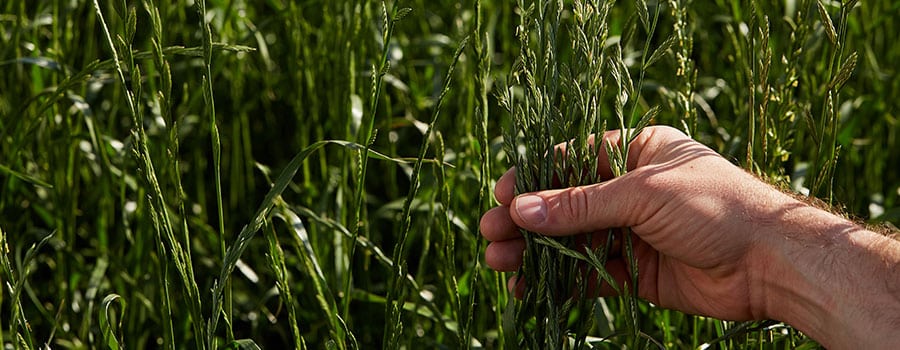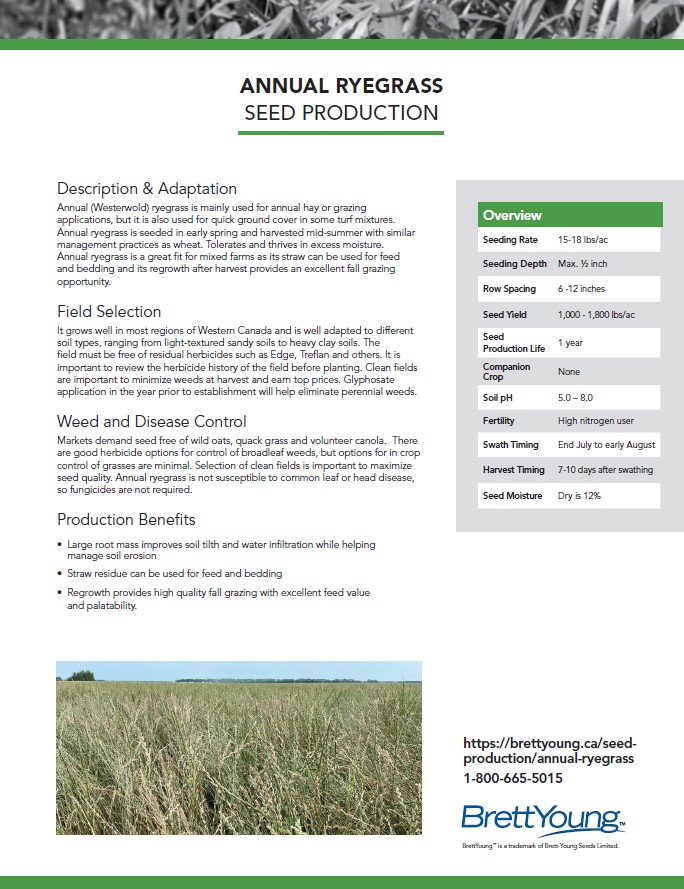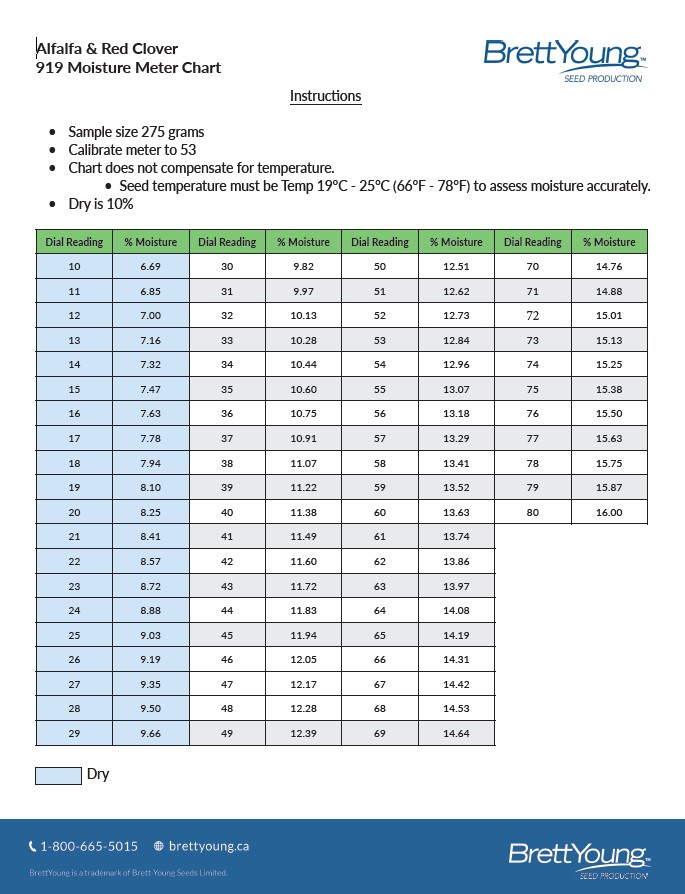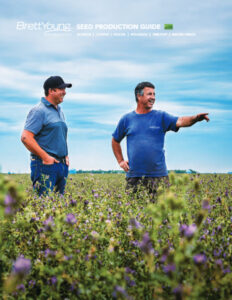- Home
- /
- Seed Production
- /
- Annual Ryegrass

Annual ryegrass is planted in the spring and harvested in the fall with many of the same management practices as wheat. It grows well in most areas of Western Canada and can tolerate excess moisture. Annual ryegrass should be one of the first crops planted, preferably into a firm seedbed at about ½ inch deep. Annual ryegrass is mainly used for annual hay or grazing applications, but it is also used for quick ground cover in some turf mixtures.
Field Selection
Annual ryegrass responds well to moisture and nitrogen. It is adapted to different soil types, ranging from light textured sandy soils to heavy clay soils. It is important to select a clean field that is free of residual herbicides such as Treflan™ or Edge™.
Weed Control
Wild oats and quackgrass are the worst weed problems. Wild oats and broadleaf weeds can be controlled with herbicides but there is no in-crop control for quackgrass.
Seeding
Conventional seeding equipment can be used. Air drills, air seeders, press drills and hoe drills all work well.
Harvesting
Annual ryegrass must be swathed. Days to maturity for annual ryegrass is comparable to spring wheat. Annual ryegrass is usually harvested 7 – 10 days after cutting. Either conventional or rotary combines can be used. Annual ryegrass is considered dry at 11% moisture, but can be harvested at 14% and dried in an aeration bin. Heat cannot be used as it can affect germination.
Residue
Straw residue can be an added bonus for cattle producers. It can be removed for livestock feed or bedding. Depending on fall moisture, regrowth can be used for fall grazing or hay.
Seed Yield
Yields range from 1,000 – 1,800 lbs/acre with a five-year average.
| Features | |
|---|---|
| Crop Type | Grass |
| Revenue | Moderate |
| Rotation | Short |
| Moisture Tolerance | Medium – High |
| Harvesting | Medium |
Annual Ryegrass Tech Sheet & Moisture Chart
SEED PRODUCTION GUIDE
CONTACT A SEED PRODUCTION SPECIALIST

From scouting and selection of production fields, fertility programs, pest management and growth regulator recommendations to swathing, harvest timing and cover crop management, a dedicated Seed Production Specialist is with you every step of the way to help maximize returns.



